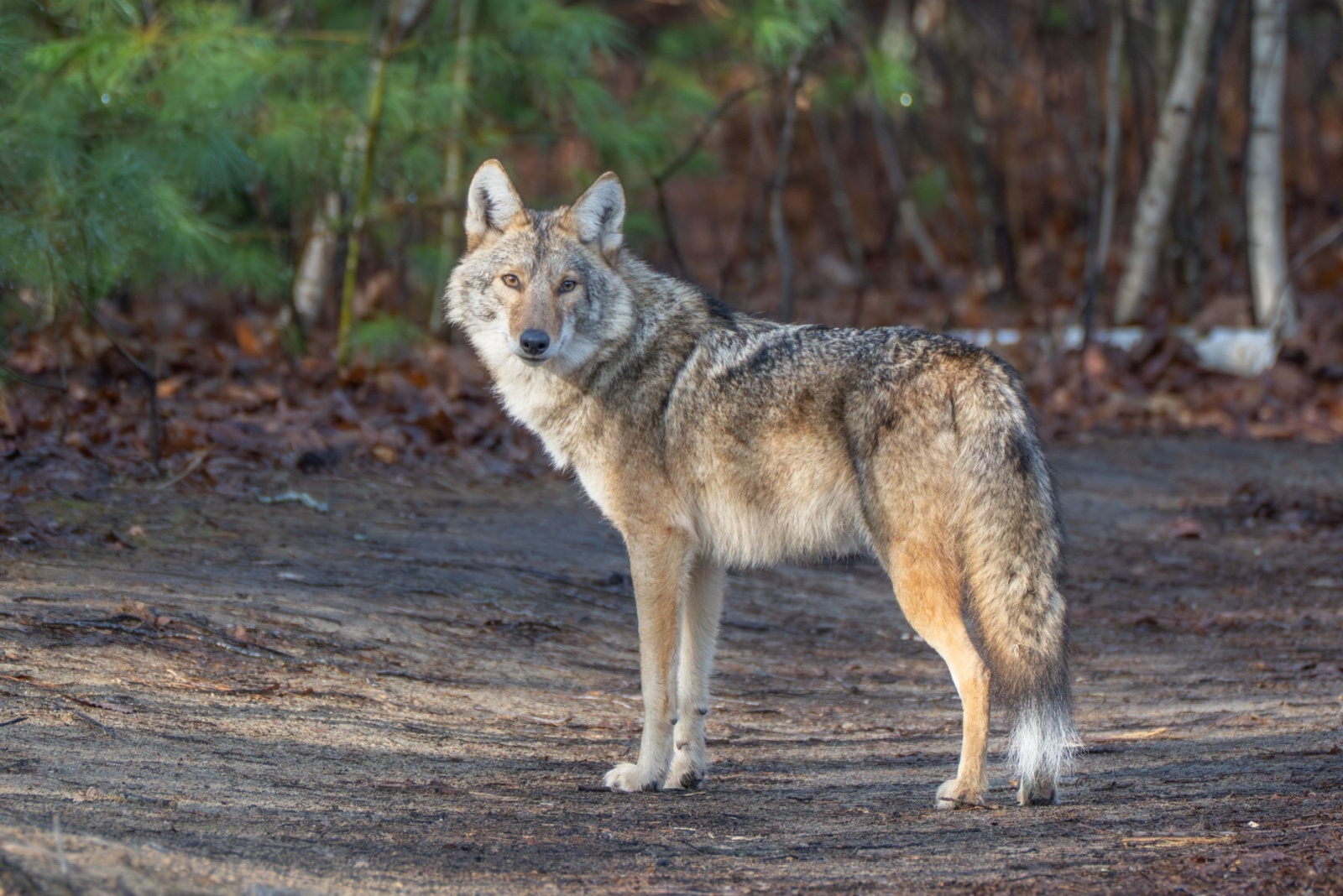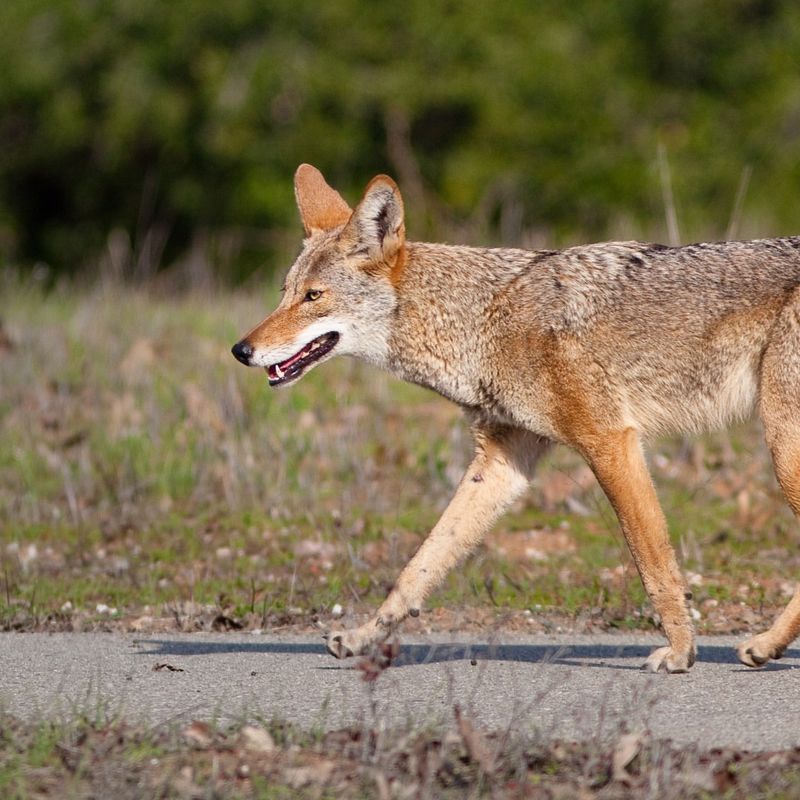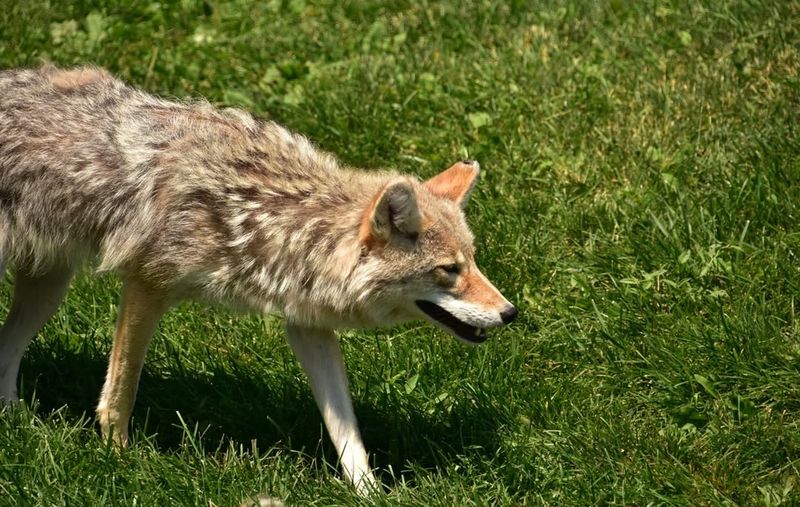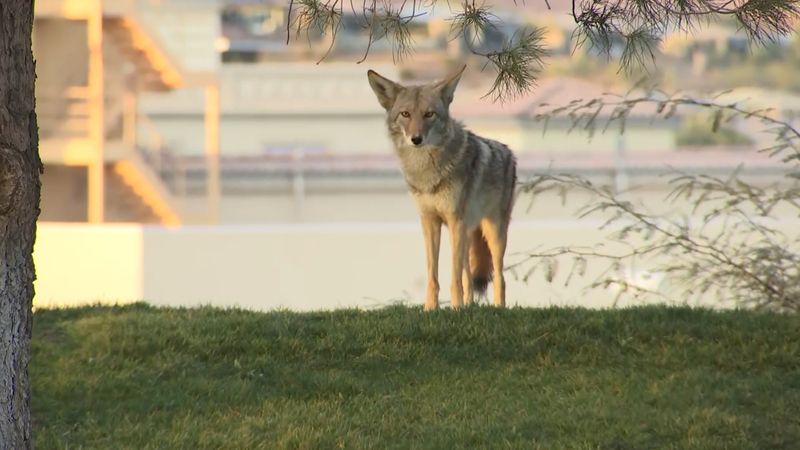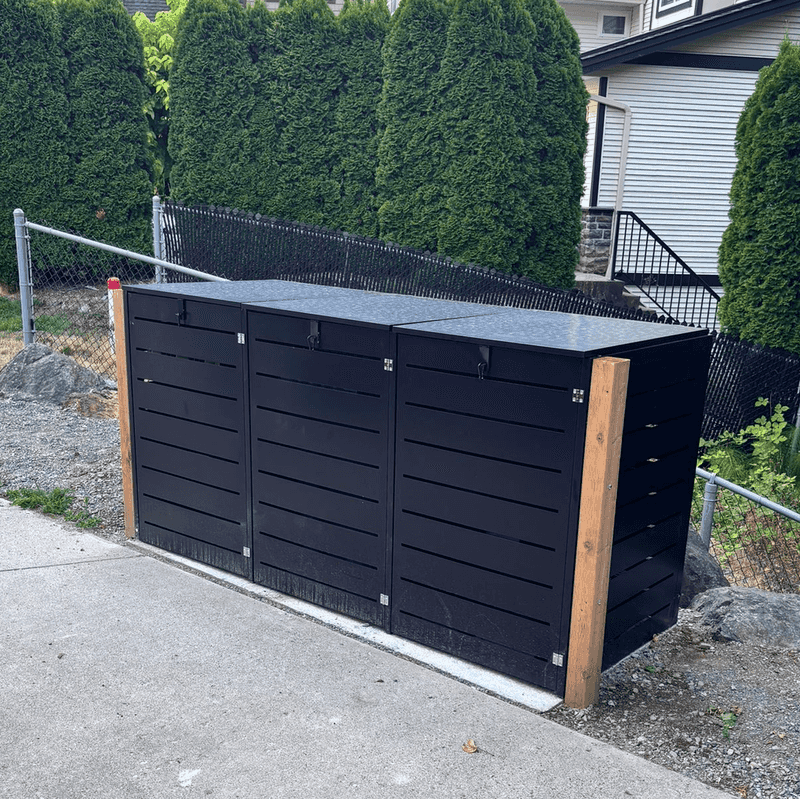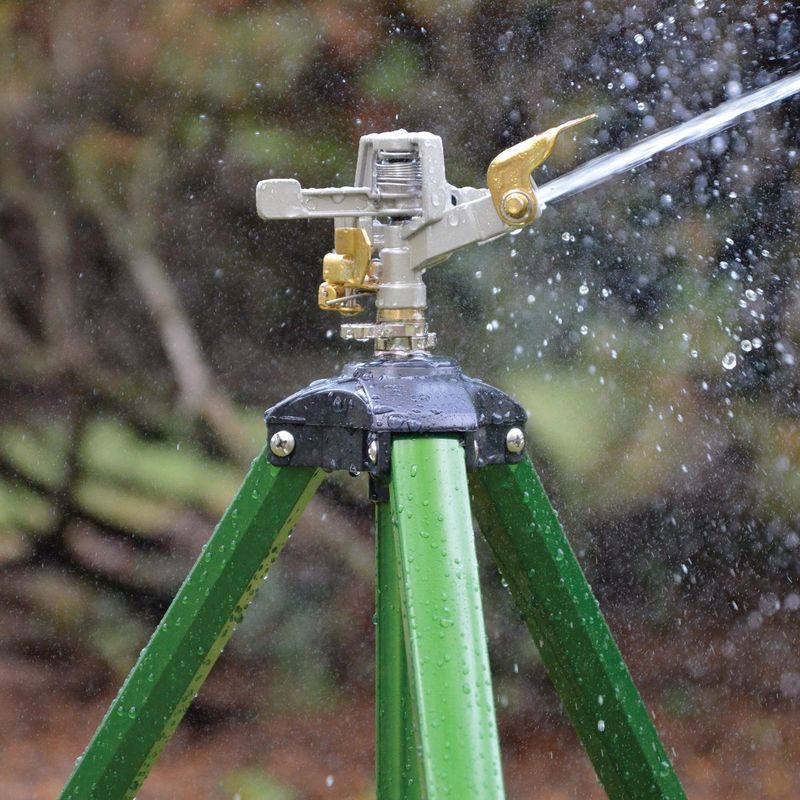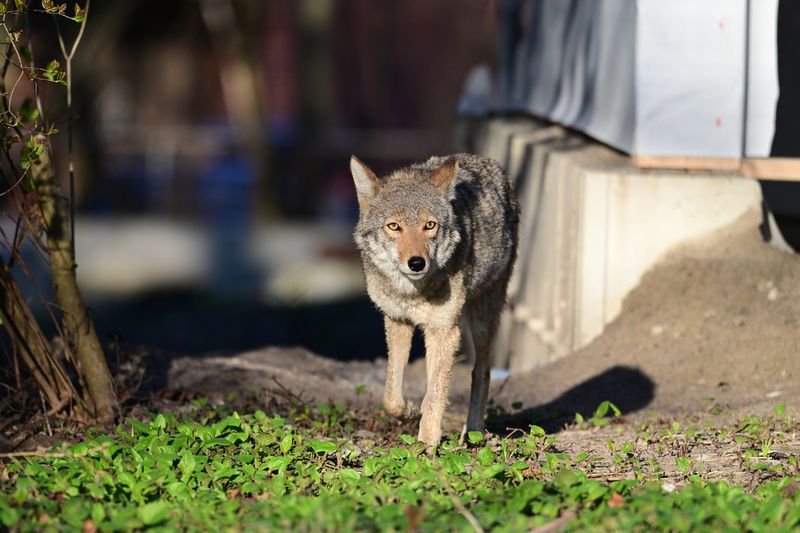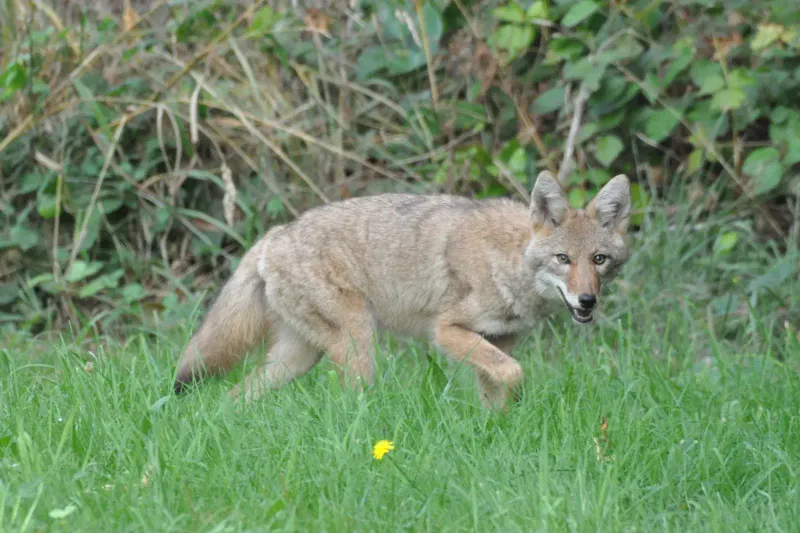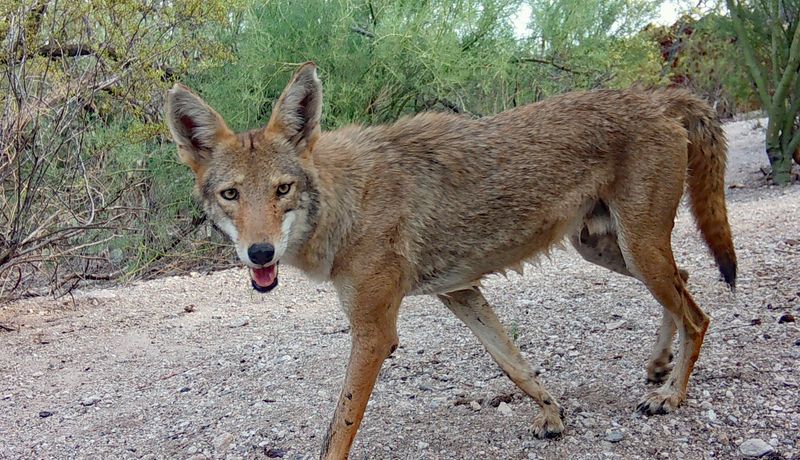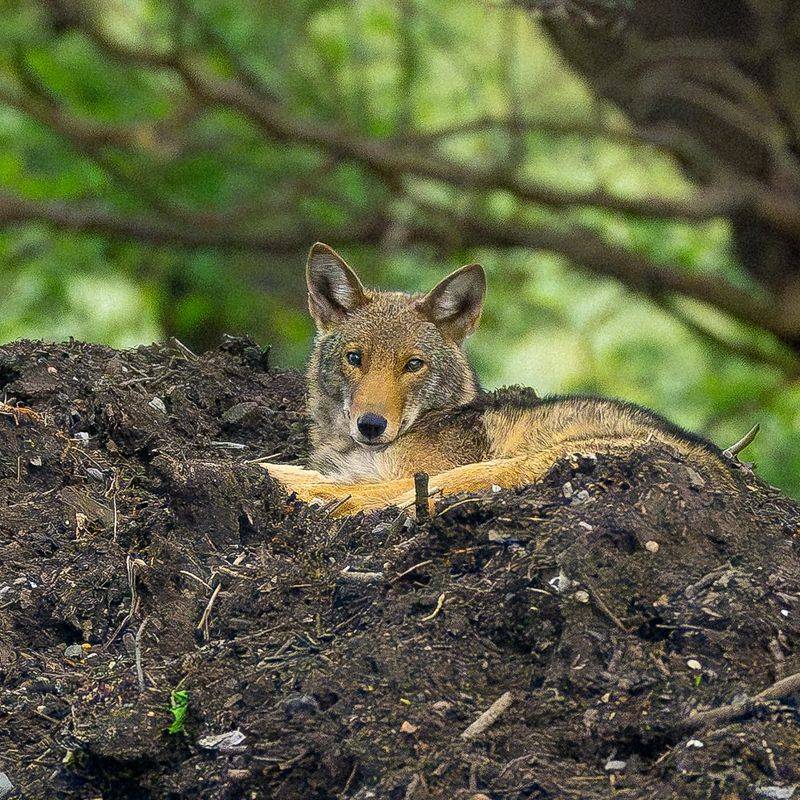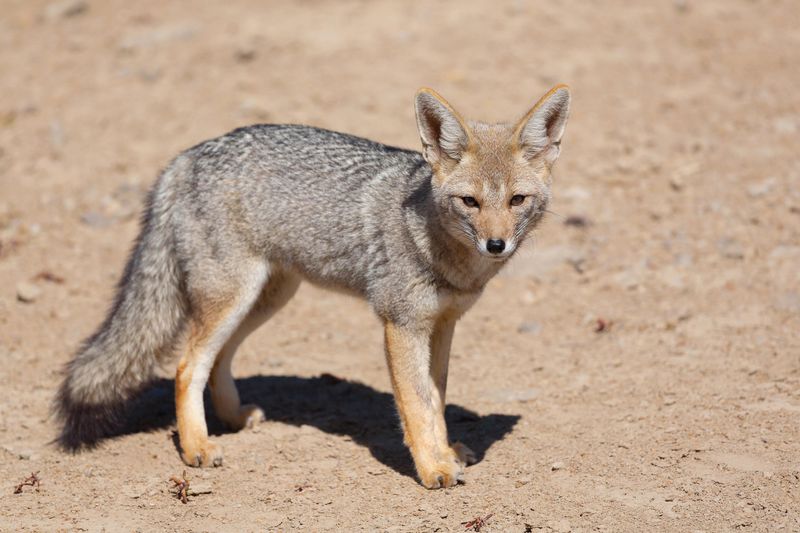A coyote wandering into your Maryland yard can cause a moment of panic—but staying calm is the key. These animals are highly adaptable and often just passing through.
The trick is knowing how to encourage them to keep moving without putting yourself, your pets, or the coyote at risk.
1. Make Yourself Look Bigger And More Intimidating
Coyotes usually avoid humans, but they need a reminder that you’re the boss of your space. Raise your arms high above your head, open your jacket wide, or wave a stick to increase your size. Standing tall sends a clear message that you’re not prey.
Never crouch down or turn your back, as both actions make you appear weak. Face the animal directly while backing away slowly to maintain control of the situation without triggering an attack.
2. Use Loud Noises To Scare The Coyote Away
Coyotes dislike sudden, jarring sounds that disrupt their comfort zone. Yell firmly, clap your hands loudly, bang pots and pans together, or use an air horn if you have one nearby. The goal is creating enough racket to make the animal uncomfortable and eager to leave.
Whistle sharply or stomp your feet hard on the ground for added effect. Consistent noise works better than a single shout, so keep up the commotion until the coyote retreats from your Maryland property completely.
3. Throw Objects Near The Coyote Without Hitting It
Tossing items toward a coyote reinforces that your Maryland yard is not a safe place for it to linger. Grab sticks, rocks, or tennis balls and throw them in the animal’s direction, aiming to land close but not strike it directly. The sudden movement and impact nearby will startle it into leaving.
Avoid actually hitting the coyote, as this could injure it or provoke aggressive behavior. Your goal is to haze the animal, teaching it to fear human spaces without causing harm or escalating danger.
4. Keep Your Pets Indoors Or Close To You
Small dogs and cats look like easy meals to hungry coyotes, especially during dawn and dusk when these predators are most active. Bring your pets inside immediately when you spot a coyote, or keep them on a short leash right beside you if they’re already outside.
Never let pets wander freely in your Maryland yard unsupervised, even if it’s fenced. Coyotes can jump surprisingly high barriers and may view your furry friends as prey rather than companions, leading to tragic encounters.
5. Secure All Outdoor Food Sources Immediately
Coyotes wander into yards primarily because they smell something tasty. Pet food bowls, bird feeders, fallen fruit from trees, and unsecured garbage cans all attract these opportunistic eaters. Remove these temptations as quickly as possible to discourage repeat visits.
Store trash in bins with tight-fitting lids and bring pet dishes inside after feeding times. Clean up any spilled birdseed regularly and pick ripe fruit before it drops. Eliminating food sources makes your Maryland property far less appealing to wandering wildlife.
6. Install Motion-Activated Lights And Sprinklers
Coyotes prefer operating under the cover of darkness when they feel less exposed and vulnerable. Motion-activated lights suddenly illuminate your yard when movement is detected, startling the animal and making it feel unsafe. Bright, unexpected light disrupts their natural hunting behavior.
Motion-sensor sprinklers add another layer of defense by spraying water when triggered. The sudden burst surprises coyotes and creates an unpleasant experience they’ll want to avoid. Both deterrents work automatically, protecting your Maryland property even when you’re asleep or away from home.
7. Report Aggressive Coyote Behavior To Wildlife Authorities
Most coyotes run away when confronted, but some act boldly or refuse to leave despite your efforts. If a coyote approaches you directly, shows no fear, or returns repeatedly to your property, contact Maryland Department of Natural Resources immediately. Aggressive behavior poses serious risks to community safety.
Wildlife officers can assess the situation and take appropriate action, whether that means increased monitoring, relocation, or removal. Your report helps protect neighbors and tracks patterns that might indicate a problem animal requiring professional intervention.
8. Walk Toward The Coyote While Making Noise
Confidently advancing toward a coyote while creating a disturbance teaches it that humans are threats, not prey. Walk purposefully in its direction without running, maintaining eye contact and continuing your loud noises. Your forward movement demonstrates dominance and forces the animal to retreat.
Stop advancing once the coyote starts backing away or running, but don’t stop making noise until it’s completely gone. This hazing technique reinforces boundaries and helps condition local coyotes to avoid human properties in the future through negative association.
9. Keep Small Children Close And Supervise Outdoor Play
Young children playing alone might not recognize danger or know how to respond appropriately when a coyote appears. Their small size, quick movements, and high-pitched voices can trigger a predator’s hunting instincts. Always supervise kids during outdoor activities, especially during early morning and evening hours.
Teach children to never approach wild animals and to immediately alert an adult if they spot a coyote. Stay within arm’s reach of toddlers and preschoolers, and keep older kids within clear sight and earshot at all times.
10. Never Run Away Or Turn Your Back
Running triggers a coyote’s chase instinct, transforming you from a potential threat into something that resembles prey. Your rapid movement signals fear and vulnerability, encouraging the animal to pursue. Always face the coyote and back away slowly instead of fleeing.
Turning your back removes the intimidation factor of direct eye contact and makes you appear less threatening. Maintain visual contact while creating distance gradually. Moving calmly demonstrates confidence and keeps you aware of the animal’s position and behavior throughout the encounter.
11. Don’t Feed Coyotes Or Leave Food Out Intentionally
Feeding wild coyotes destroys their natural fear of humans and creates dangerous associations between people and food. Once coyotes learn that yards provide easy meals, they’ll return constantly and may become aggressive when food isn’t available. This behavior endangers entire neighborhoods.
Some people mistakenly believe feeding wildlife is kind, but it actually harms animals by making them dependent and bold. Maryland law prohibits feeding coyotes for these exact reasons. Respect wildlife by letting them find natural food sources in appropriate habitats.
12. Don’t Approach Or Try To Pet The Coyote
Wild animals aren’t domesticated pets, no matter how cute or curious they appear. Coyotes carry diseases like rabies and can bite or scratch when they feel threatened or cornered. Approaching one puts you at serious risk of injury and infection.
Even coyotes that seem calm or unafraid are unpredictable and potentially dangerous. Their behavior can change instantly from passive to aggressive. Maintain a safe distance of at least 50 feet, and never attempt to touch or interact with wild coyotes under any circumstances.
13. Don’t Use Poison Or Lethal Traps Without Authorization
Maryland has strict wildlife regulations that prohibit unauthorized killing or trapping of coyotes using certain methods. Poison and lethal traps can harm pets, children, and non-target wildlife while creating legal problems for you. These methods are often inhumane and ineffective at solving long-term coyote issues.
Professional wildlife management offers humane, legal solutions that address root causes rather than symptoms. Contact licensed wildlife control operators or state authorities before taking any lethal action. Proper channels ensure safety, legality, and effectiveness in managing wildlife conflicts responsibly.

